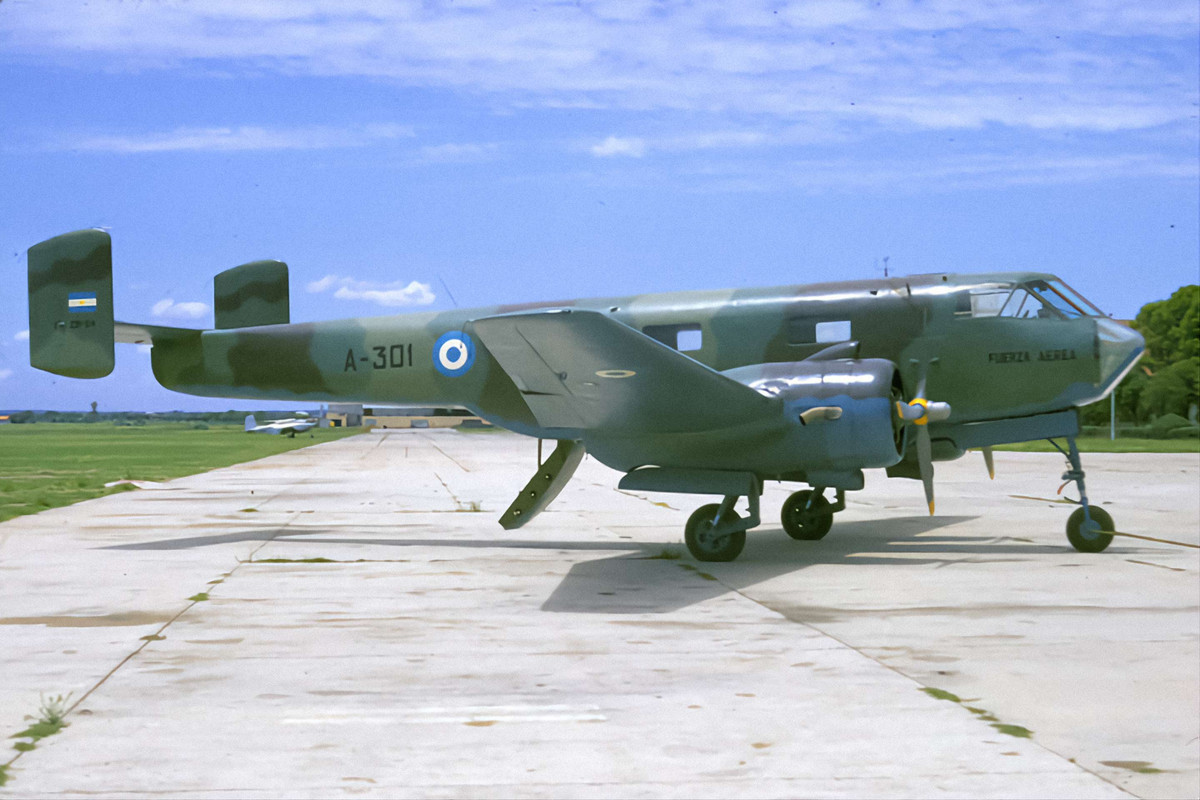- Yes
- No
- German TT
- Future Argentine TT
- Other (tell us below)
- I answered “No” on the first question.

An introduction:
History & Service:
The Huanquero was designed by German engineers Kurt Tank and Paul Klages in 1950. It was a twin engine, low wing Monoplane, designed to operate as Transport, Light bomber, Trainer, ambulance and as a photographic aircraft, the design was going to be powered by the I.Ae.R-19 “El Indio” engines, those providing 750Hp each (although the C version could have given them more HP), this engines were designed by Argentine engineer Raul Magallanes, both engines were going to use 3 bladed Rotol propellers. The metallic fuselage was divided into 4 sections, the wings were unified to central section that included the engine supports and the landing gear, the wings were equipped with flaps and ailerons, while inside the wings there were fuel tanks.
By the end of 1950 there was a 1:1 mockup of the aircraft with fuselage mounted 20mm cannons and a dorsal turret, both things never made it to the final design. The first prototype took to the skies the 7th of September 1952 commanded by 1st Lt. Jorge Doyle, the aircraft was designated IA-35-P, the second prototype was used for static tests by 1954. During 1955 pre-production of 3 units starts but its halted after the revolutionary events of September 1955, the project was later re-initiated and given the Name “Huanquero” (after an insect), the prototypes were modified and given new serials (Ea-001 for the first).

The 3 examples ordered in 1955 are completed in 1957 and registered as Ea-002, 003 and 004, all were conceived in different nose and role configurations, as some of them served as trainers and others as transport or observers. A further 16 examples were also awaiting to be completed, as they were being selected to be made in different configurations. Production of this aircraft ends in 1962 with the 4 remaining uncompleted airframes becoming Guarani I transport aircraft after receiving turboprop engines.

The Huanqueros served in the 1st, 2nd and 5th brigades, taking various roles (most of them already mentioned) but its worth mentioned that ambulance variants operated from the 2nd and 5th brigade, while the photographic examples operated only from the 2nd brigade, the attacker were assigned to the 5th Brigade and lastly the ones that did mostly transport were deployed in the 1st brigade, the Mar del Plata detachment and the Rio IV maintenance workshops.

Their service lasted until 1973 where after 15 years of continuous operation they were replaced by more dedicated aircraft (Guarani II for transport and Pucara for attack).
Specifications:
Spoiler
Crew: 3
Length: 13,98 m
Wingspan: 19,60 m
Height: 4,30 m
Wing Surface: 42 m²
Empty weight: 3.500 kg
Max takeoff weight: 5.700 kg
Engines: 2× radial I.Ae. 19 “El Indio”
Power: 750Hp (each)
Max speed: 380 km/h at 2100 m
Cruise speed: 370 km/h at 2800m
Landing speed: 125 km/h
Service ceiling: 6500m
Climb-rate: 6,6 m/s
Wing load: 138 kg/m²
Autonomy: 4hs 38 minutes
Armament:
x2 Fuselage mounted 12.7 Browning machine-guns
x4 belly Hard-points to carry 50Kg bombs, 100kg Bombs or Napalm containers
x2 Underwing Hard-points to carry x8 T-10 rockets (x4 on each wing)
Images:
Spoiler




Sources:
Spoiler
Books/Magazines:
Fabrica Militar de Aviones, Crónicas y Testimonios Angel Cesar Arreguez
Sites:
http://www.amilarg.com.ar/huanquero.html
http://www.cientifico.museo.efn.uncor.edu/?page_id=75
https://www.aviacionline.com/2020/10/sabado-retro-capitulo-35-i-ae-35-huanquero-el-justicialista-del-aire/
https://www.taringa.net/+apuntes_y_monografias/moscardon-de-plata-el-dinfia-huanquero-ia-35_12qi31
I.Ae. 35 Huanquero - Wikipedia, la enciclopedia libre